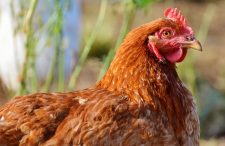OAHN Poultry Research Project: Evaluating virulence genes and antimicrobial susceptibility of avian pathogenic Escherichia coli from Ontario broiler and broiler breeder flocks
 Project Lead: Dr. Michele Guerin
Project Lead: Dr. Michele Guerin
Project Co-Lead: Dr. Csaba Varga
Collaborators: Dr. Durda Slavic, Dr. Patrick Boerlin, Dr. Marina Brash, Dr. Emily Martin, Dr. Rachel Ouckama, Dr. Alexandru Weisz, Dr. Mike Petrik, Dr. Cynthia Philippe, Dr. Melanie Barham

Avian pathogenic Escherichia coli (APEC), a subgroup of extra-intestinal pathogenic E. coli, is the causative agent of colibacillosis in poultry. Colibacillosis can cause high morbidity, mortality, and cellulitis in broiler chicken flocks, leading to extensive economic losses. Based on surveillance data collected through the Ontario Animal Health Network, systemic bacterial infection caused by E. coli is very common in chickens of all ages in Ontario. Previous research has identified correlations between antimicrobial resistance and virulence in APEC isolates; however, there have been no studies conducted in Ontario evaluating virulence-associated genes and antimicrobial resistance patterns of APEC strains in broiler and broiler breeder flocks.
This study identified high frequencies of resistance to tetracycline, gentamicin, spectinomycin, and ampicillin among APEC isolates; antimicrobials that are frequently used to treat colibacillosis in broilers. The most common genes identified were: sitA, Iss, iroN, iutA, ompT, and etsB. Significant associations between resistance to individual antimicrobials and virulence-associated genes were noted. Our results provide information on antimicrobial resistance and virulence gene patterns currently present on Ontario broiler chicken and broiler breeder farms that can be used as a benchmark from which to measure changes as the industry moves toward reduced antimicrobial use.
[maxbutton id=”1″ ]


